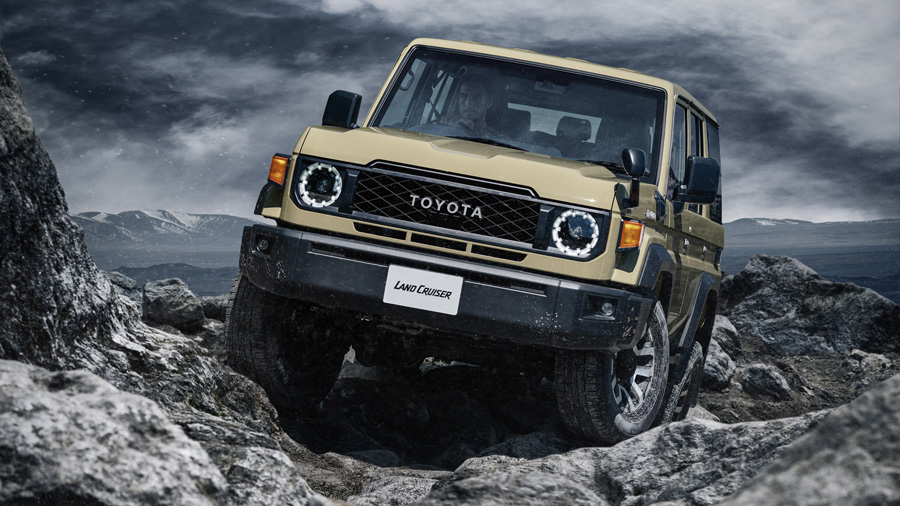According to foreign media reports, as the deadline for the Trump administration's 'reciprocal' tariffs approaches, Japan continues to negotiate trade agreements with the United States, while Japanese automakers are exploring various options to help alleviate the trade imbalance between Japan and the U.S. Among these, Toyota is considering importing cars produced in the U.S. back to the Japanese market or introducing American-made vehicles into its Japanese dealership network. Toyota Chairman Akio Toyoda met with Japanese Prime Minister Shigeru Ishiba on May 1, with Toyota Executive Vice President Hiroki Nakajima also in attendance. Nakajima stated, 'Toyota produces a large number of vehicles in the U.S., and if the Japan-U.S. trade deficit is a problem, we can consider importing Toyota cars made in America to the Japanese market.' He added, 'If American automakers want to introduce cars into Japan, I believe utilizing Toyota's sales network to sell these cars is an option.' Currently, there are only 163 stores in Japan selling American cars, compared to 1,930 selling European cars, while Toyota itself has over 4,000 dealerships. Nakajima noted that this was also discussed during the meeting between Toyoda and Ishiba, saying, 'We are not saying we will definitely do this, but we did discuss this possibility.' If Toyota proceeds with this plan, it would not be the first time the company has sold American brand cars in Japan. In the 1990s, Toyota sold the Chevrolet Cavalier produced by General Motors and the Scepter wagon manufactured in the U.S. by Toyota. Meanwhile, in response to the potential continuation of a 25% tariff on imported cars announced by Trump on April 3, Japanese automakers are addressing this by raising prices for vehicles sold in the U.S. or further increasing domestic production capacity. Trump stated last week that the U.S. government has begun sending letters to various countries, informing them of tariff rates on goods exported to the U.S. He also expressed uncertainty about reaching an agreement with Japan, citing their strong stance, and suggested that Japan could face reciprocal tariffs as high as 35%, up from the previous 24%. Prime Minister Ishiba showed no signs of compromise, stating, 'We must protect national interests; Japan is the largest investor in the U.S., which is different from other countries.' He emphasized that bilateral trade should be based on mutual investment rather than tariffs, citing a plan by Japan's Nippon Steel to invest in the U.S. steel industry as an example. The Japanese government continues to demand an exemption from U.S. auto tariffs. Ryutaro Kono, chief Japanese economist at BNP Paribas, pointed out in a recent report that the issue of auto tariffs remains the primary concern for Japan. He specifically emphasized, 'Any proposal to maintain a 25% auto tariff rate or not set low-tariff quotas is unlikely to be accepted by the Japanese government.' Trump has long complained about the low market share of U.S. cars in Japan. According to data from the Japan Automobile Importers Association, between January and June this year, Jeep accounted for 2.51% of new registered imported vehicles in Japan, Cadillac only 0.16%, and Chevrolet a mere 0.11%. Despite Japan having abolished tariffs on imported cars since 1978, Trump insists that there are non-tariff barriers against American vehicles. Reports indicate that during early negotiations with the Trump administration, Japan had considered simplifying the approval process for American cars in Japan, but progress on this idea remains unclear. Nakajima emphasized that foreign brands need to make certain local adjustments to gain broad acceptance in the Japanese market. First, the narrow streets in Japan necessitate appropriate vehicle sizes. Second, since most road accidents in Japan involve vehicles hitting pedestrians rather than collisions between vehicles, Japanese product regulations place greater emphasis on pedestrian safety features rather than driver protection. Additionally, due to a surge in accidents caused by elderly drivers mistaking the accelerator for the brake, Japan requires vehicles to be equipped with sensor-activated automatic braking systems.
Toyota Considers Importing American-Made Cars to Japan Amid Trade Talks

Share this post on: